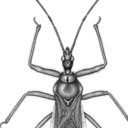Tree Species with Photosynthetic Stems Have Greater Nighttime Sap Flux.
Fjalë kyçe
Abstrakt
An increasing body of evidence has shown that nighttime sap flux occurs in most plants, but the physiological implications and regulatory mechanism are poorly known. The significance of corticular photosynthesis has received much attention during the last decade, however, the knowledge of the relationship between corticular photosynthesis and nocturnal stem sap flow is limited at present. In this study, we divided seven tree species into two groups according to different photosynthetic capabilities: trees of species with (Castanopsis hystrix, Michelia macclurei, Eucalyptus citriodora, and Eucalyptus grandis × urophylla) and without (Castanopsis fissa, Schima superba, and Acacia auriculiformis) photosynthetic stems, and the sap flux (Js) and chlorophyll fluorescence parameters for these species were measured. One-way ANOVA analysis showed that the Fv/Fm (Maximum photochemical quantum yield of PSII) and ΦPSII (effective photochemical quantum yield of PSII) values were lower in non-photosynthetic stem species compared to photosynthetic stem species. The linear regression analysis showed that Js,d (daytime sap flux) and Js,n (nighttime sap flux) of non-photosynthetic stem species was 87.7 and 60.9% of the stem photosynthetic species. Furthermore, for a given daytime transpiration water loss, total nighttime sap flux was higher in species with photosynthetic stems (SlopeSMA = 2.680) than in non-photosynthetic stems species (SlopeSMA = 1.943). These results mean that stem corticular photosynthesis has a possible effect on the nighttime water flow, highlighting the important eco-physiological relationship between nighttime sap flux and corticular photosynthesis.



